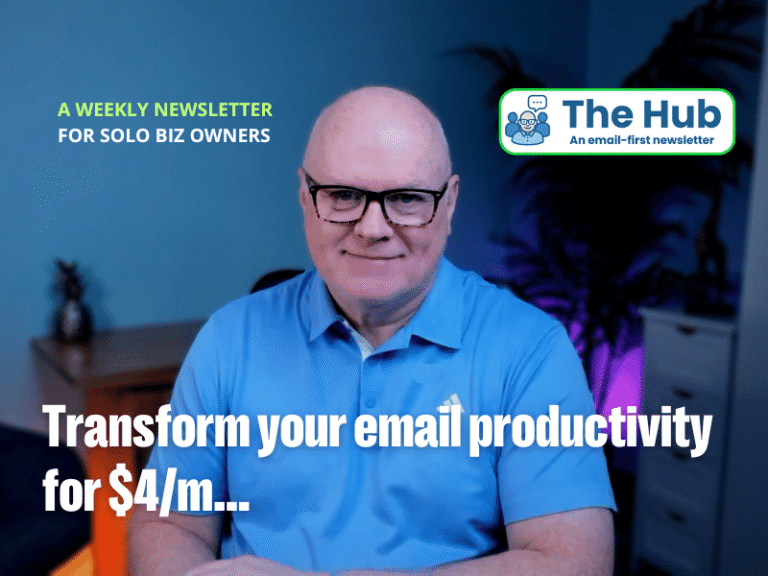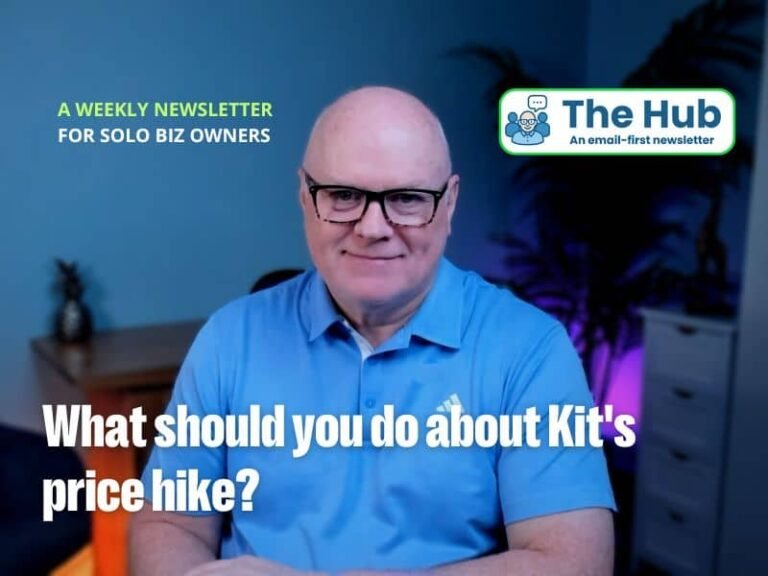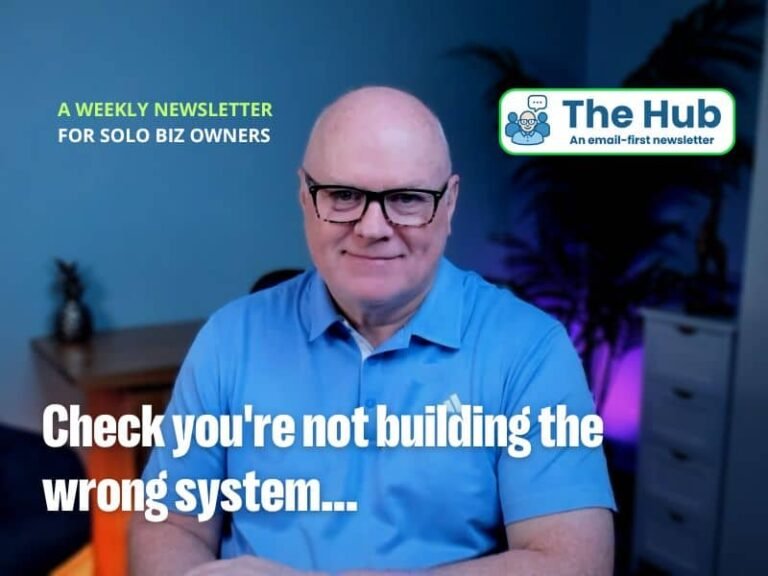|
|
Use tags and segments to make your email subscribers feel special!
Chances are, you’ve probably heard of them, but never actually used them.
I’m talking about ‘tags‘ and ‘segments‘ that reside inside email marketing platforms (often referred to as ‘email service providers‘). But what exactly are they and what do they do for us?
Good question… and here’s my ‘keeping it simple‘ explanation;
Tags
Think of these as ‘attributes‘ of a subscriber. These can literally be absolutely anything you like, but I’ll give you a few examples that’ll help clarify their use;
- interest (e.g. email marketing)
- location (e.g. United Kingdom)
- business type (e.g. startup)
- favourite film (e.g. “Office Space”)
- hobby (e.g. golf)
- last product purchased (e.g. “Email Marketing Made Really Simple”)
- next offer (e.g. “Email Marketing for Freelance Copywriters – 8-Week Program”)
- subscribed to newsletter (e.g. “Convert with ConvertKit”)
- etc…
|
Office worker covered in post-it notes, film “Office Space” |
You get the gist, these are all values associated with this particular email subscriber. I like to think of tags being like those little coloured sticky-notes that you get, each one stuck to a person to denote their attributes – to the point where they can resemble that guy from the film “Office Space” (if you haven’t seen it, you should check it out! – it’s funny, especially if you’ve ever been a prisoner employee in ‘corporate land’!).
Segments
The use of segments comes hand-in-hand with the use of tags – this is because segments are merely filtered views of your email subscribers, using tags to create the segments. Here is an example to illustrate how you can use them;
Let’s say I wanted to achieve the following…
“I want to send an email to a subset of my list. I want to include every subscriber who has the following tags;
- they live in the UK
- they have subscribed to my newsletter (e.g. my weekly newsletter called “Convert with ConvertKit”)
- they want to learn about email marketing”
Based on this criteria, I can create a new segment called “Email marketing students in the UK“
Once I have my segment created, all I need to do is instruct my email marketing platform (e.g. ConvertKit) to send my email to the segment of that name.
ConvertKit will then send the email to everyone who matches the filtered ‘tags’, in other words, everyone in that ‘segment’.
So, in summary, and to make a clear distinction – think of ‘tags‘ as attributes of subscribers, and think of ‘segments‘ as filtered views that contain a group of tagged subscribers.
It’s worth noting that the real power of using tags and segments is to make your email subscribers’ experience of interacting with you a much more meaningful one, and one that has more relevance to them.
|
|
How I make my life easier (and simpler) by leveraging a scheduling tool.
We all have to do it if we want our businesses to grow, right? It’s the only way that we can get our ‘name’ out there into the big wide world! I’m talking about publishing content that delivers insights and value to our audiences.
But it can get a bit challenging, especially with the number of social platforms that are out there today – not to mention the emails that your subscribers are waiting to receive from you.
It can all get a bit much, if we’re not careful.
But that’s where the power of a good scheduling tool can make all the difference. It can save us many hours of angst and worry about having to being consistent with our content.
I’m going to show you how I manage my own content using a platform called “Publer“.
There are dozens, if not hundreds, of scheduling platforms to choose from, so pick one that you like and feel comfortable using – that way, you’ll be much more likely to use it effectively, and for the long term, but for me (who has used many) Publer ticks all the right boxes, but you should always do your own due diligence.
My social platform of choice is LinkedIn, so I’ll use that to show you how I create, schedule, and then engage with my content.
Creating the content
I tend to create 4 types of LinkedIn content;
- text-only
- text-with-image
- text-with-video
- text-with-document (some people refer to these as ‘carousels’, even though they aren’t)
I create the content using a number of apps and tools, including Canva, ScreenFlow, Vimeo, and of course, Publer (yes, you can create content directly from within Publer).
My posts have one of two attributes; they’re either ‘evergreen‘ or ‘date-sensitive‘. The difference is obvious I’m sure, but in essence, I recycle my evergreen content a few times so that it’s not merely used once and discarded.
As a side note; the content you share on social platforms, LinkedIn included, only ever gets served to a small percentage of your network – estimates range from 5% – 20% will ever see it. This means that when you recycle valuable and engaging content, there’s a good chance many people will be seeing it for the first time.
Scheduling the content
I have two delivery slots for LinkedIn, one for my personal profile, and a second for my business page. I nominate which timed slots I’d like my content to be shared and Publer takes care of the rest.
My two slots that I use regularly for my content are 8am (GMT) for my personal posts, and 9am (GMT) for my business posts.
My content is typically about 70%-30% split between fresh content and recycled content, but I never recycle any more frequently than every 13 weeks and I retire recycled posts after a 12-month rolling period has lapsed since its first share (if you do the maths, one post never gets shared any more than 4 times in its lifetime).
Below you can see a typical week of scheduled content in Publer;
|
|
I tend to only share content on LinkedIn Mon-Fri, so don’t schedule anything for weekends. This is because I make sure I’m present on the platform whenever my content is published, something I can’t always commit to at weekends.
Engaging with content
Whenever anyone engages with my content, whether it’s a ‘like‘ or a ‘repost‘ or a ‘comment’, I always respond in a timely manner so as to maximise my reach and to increase my engagement with other members on the platform. I usually stick around for an hour or so after my content goes out, and then I check back later in the day to respond to any subsequent activity that may have happened.
I see some people who use scheduling tools (and even some who don’t!) share content and then disappear, only to return hours later. This is commonly referred to as “post and ghost“, not something I would recommend doing. If nothing else, it’s wasteful behaviour IMHO – i.e. wasting potential opportunities to build relationships on the platform.
|
|
Let’s make it a date… the woman who bumbled her way to a fortune!
Whitney Wolfe Herd was born in Salt Lake City, July 1989. In 2012, she co-founded ‘Tinder‘, an online dating app (previously known as ‘MatchBox’). She came up with the ‘Tinder’ name and likened it to “starting a fire”, and began growing its user base with students on college campuses.
|
|
She and her fellow co-founder, Justin Mateen, dated on and off throughout 2013 until, she claimed that he became “verbally controlling and abusive.”
She was eventually forced to resign from Tinder and she filed a sexual harassment lawsuit against Tinder and its parent company, IAC, eventually settling for more than $1 million, plus stock in Tinder.
It was time for Whitney to put that period behind her and move on to her next business conquest.
Naturally, her bias was towards tech, apps, and in particular a dating app – after all, it’s what she knew best. In 2014, with fire in her belly and Tinder in her rear-view mirror, she founded the dating app, ‘Bumble‘.
It’s a dating app with a difference; designed for woman to take the initiative in striking up potential relationships – perhaps this was her way of regaining control.
From a startup to more than 100 million users, Bumble has gone on to attract a market valuation in excess of $13 billion, giving Whitney an estimated net worth in the region of $1.5 billion, making her one of America’s richest young females.
Now, if ever there was a way to ‘show Tinder’ what she was made of, Whitney did it in spades! There’s no holding back this businesswoman and I’m sure this’ll merely be one of her many successes, yet to follow.
|
|
As a proud dad to two daughters, and a granda to two granddaughters, I’m all for equal empowerment in business! So, I say “congratulations” to Whitney – may many more woman emulate your success as they build their respective empires! 👊
|
Cheers, If we’re not already connected on LinkedIn, then let’s fix that now! If you’re new around here, let me give you a brief intro to who I am and what I do; 👋 Hi, I’m John, a freelancer with 30+ years of experience in software development, business start-up and growth strategies, and digital marketing, specialising in email marketing. I help service-based freelancers grow their businesses by showing them how to effectively implement an email marketing system that’ll bring them leads, prospects, and new clients, complemented with proven success strategies for solopreneur-type businesses.
|



